| Probe | Negative control | |
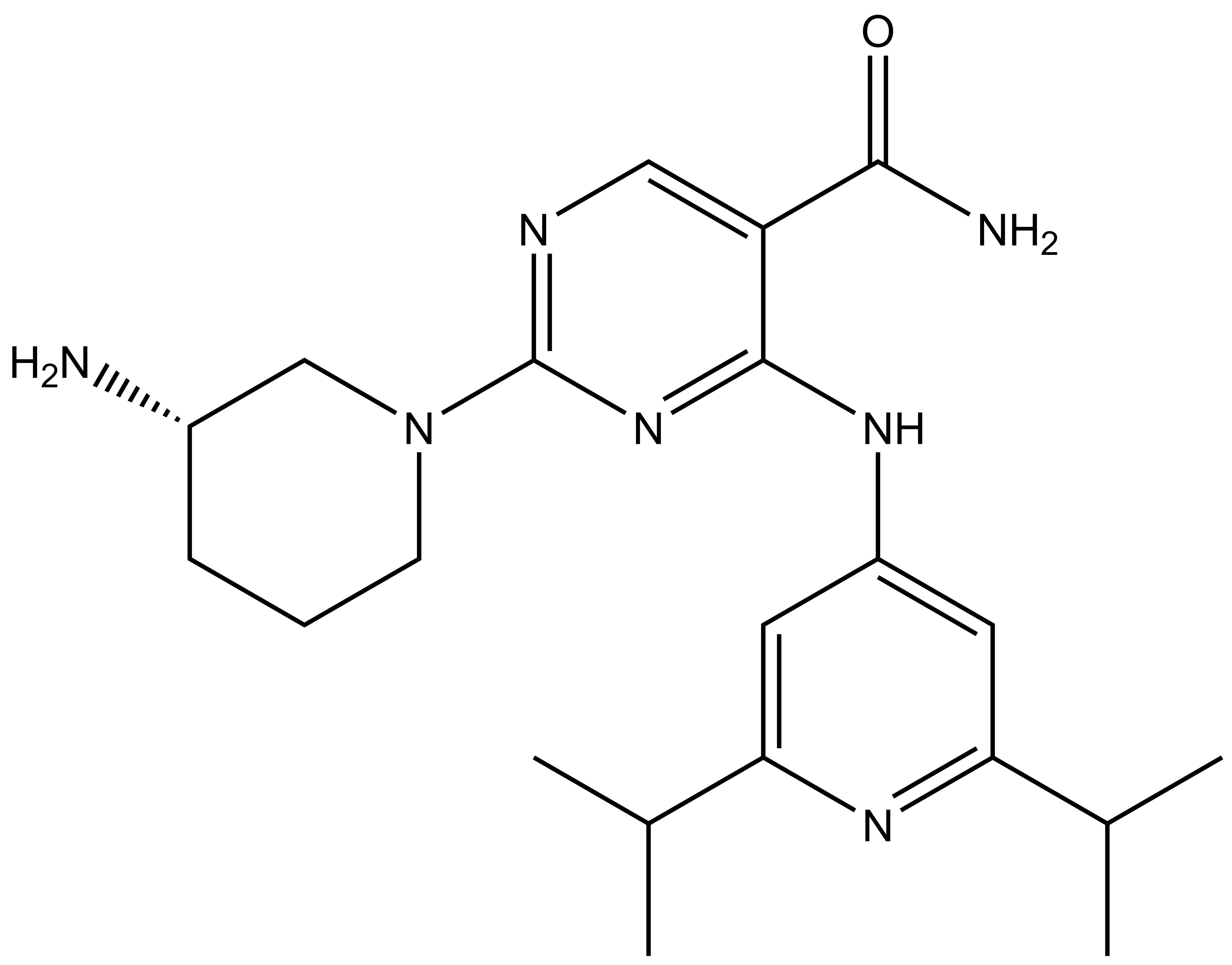 |
| 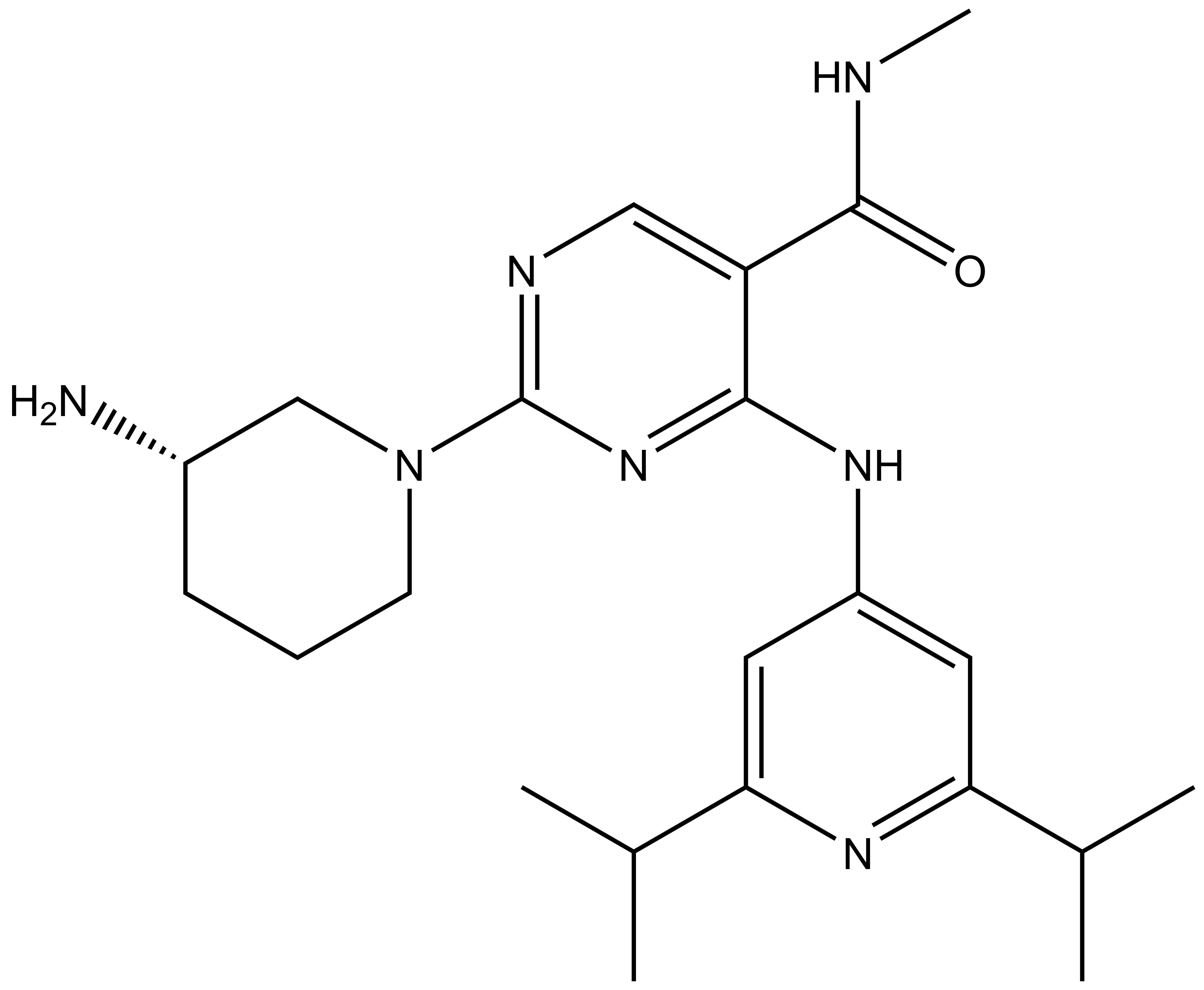 |
CS640 |
| CS640s |
CAMK1D (calcium/calmodulin-dependent protein kinase ID) is a member of the CAMK family of protein kinases. These enzymes play a crucial role in intracellular signaling pathways, and are activated by the binding of calcium ions and calmodulin. CAMK1D is activated has been shown to phosphorylate a variety of substrates, including other kinases and transcription factors.
CAMK1D is widely expressed, and recent studies have suggested that CAMK1D may play a role in the development of triple negative breast cancer is also involved in regulation of insulin release and glucose homeostasis.
Overall, CAMK1D is a multifunctional protein kinase that is involved in a wide range of cellular processes and pathways, making it a potential target for the development of therapeutic drugs for a variety of disease conditions.
| Probe | Negative control | |
 |
|  |
CS640 |
| CS640s |
Physical and chemical properties CS640 | |
| Molecular weight | 397.527 |
| Molecular formula | C21H31N7O |
| IUPAC name | (S)-2-(3-Aminopiperidin-1-yl)-4-((2,6-diisopropylpyridin-4-yl)amino)pyrimidine-5-carboxamide |
| logP | 2.4992 |
| PSA | 0.29147 |
| No. of chiral centres | 0 |
| No. of rotatable bonds | 6 |
| No. of hydrogen bond acceptors | 8 |
| No. of hydrogen bond donors | 3 |
| Storage | stable as solid and as DMSO solution. Can handle thaw and freeze cycle, but it is not recommended |
| Dissolution | soluble in DMSO in a concentration of 50 mM |
SMILES:
CC(C1=CC(NC2=NC(N3CCC[C@@H](C3)N)=NC=C2C(N)=O)=CC(C(C)C)=N1)C
InChI:
1/C21H31N7O/c1-12(2)17-8-15(9-18(26-17)13(3)4)25-20-16(19(23)29)10-24-21(27-20)28-7-5-6-14(22)11-28/h8-10,12-14H,5-7,11,22H2,1-4H3,(H2,23,29)(H,24,25,26,27)/t14-/m0/s1/f/h25H,23H2
InChIKey:
BWBUPDTUXQDHSX-AWEZNQCLSA-N
Physical and chemical properties CS640s | |
| Molecular weight | 411.554 |
| Molecular formula | C22H33N7O |
| IUPAC name | (S)-2-(3-Aminopiperidin-1-yl)-4-((2,6-diisopropylpyridin-4-yl)amino)-N-methylpyrimidine-5-carboxamide |
| logP | 2.8507 |
| PSA | 0.26643 |
| No. of chiral centres | 0 |
| No. of rotatable bonds | 6 |
| No. of hydrogen bond acceptors | 8 |
| No. of hydrogen bond donors | 3 |
| Storage | stable as solid and as DMSO solution. Can handle thaw and freeze cycle, but it is not recommended |
Selectivity profile of CS640 was determined via the Eurofins DiscoverX screen activity assay and followed up by a IC50 determination at Reaction Biology (RB) and an in house nanoBRET assay.
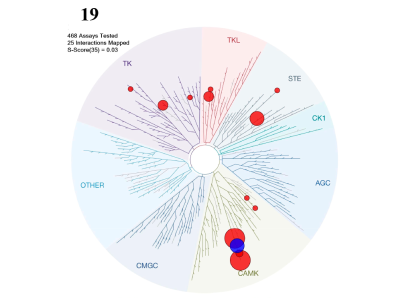 |
| Kinase | Percent of control(%) | RB IC50 (nM) | NanoBRET IC50 (nM) |
| CAMK1D | 0.9 | 8 | 29 |
| CAMK1B | 0 | 3 | 8.2 |
| CAMK1A | 0 | 1 | 23 |
| CAMK1G | 0 | 1 | 55 |
| PIP5K1C | 0.95 | 11200 | - |
| RIPK4 | 4.5 | 5690 | - |
The negative control CS640 with its blocked hinge-binding amine showed no activity on a DSF assay for 100 kinases and low activity on target on NanoBRET assay.
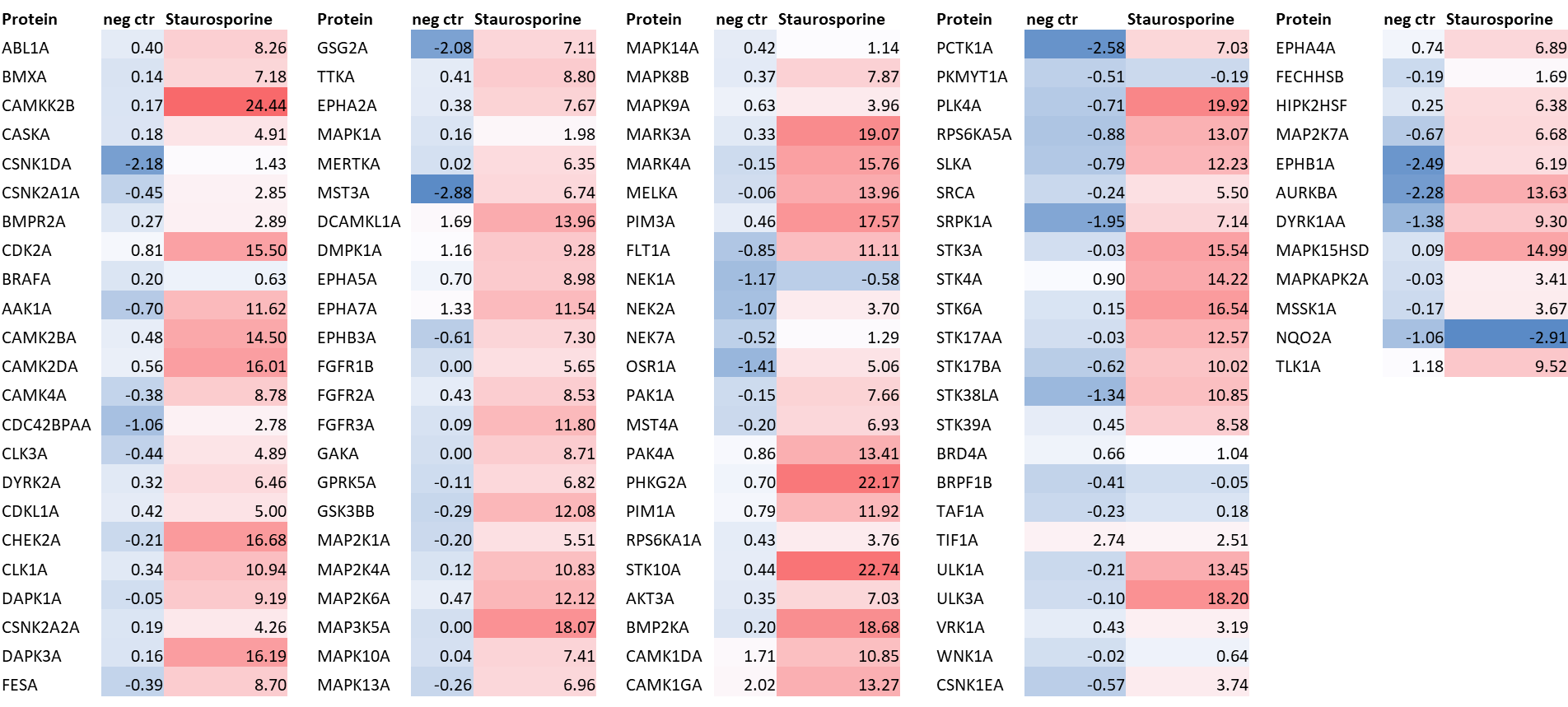 |
CS640 shows potent activity on CAMK1D IC50 of 8 nM (ADP-Glow assay) and 11 nM (pCAMK1D phosphorylation assay).
CS640 shows excellent selectivity in a Eurofins DiscoverX screen (468 Kinases). Only minor activity outside the CAMK1 subfamily found. Other possible off-targets from Discover X screen were not confirmed in nanoBRET or WesternBlot assays.
| Kinase | Percent of control(%) | RB IC50 (nM) | NanoBRET IC50 (nM) |
| CAMK1D | 0.9 | 8 | 29 |
| CAMK1B | 0 | 3 | 8.2 |
| CAMK1A | 0 | 1 | 23 |
| CAMK1G | 0 | 1 | 55 |
CS640 shows potent activity on CAMK1D IC50 of 8 nM (ADP-Glow assay) and 11 nM (pCAMK1D phosphorylation assay).
CS640 shows excellent selectivity in a Eurofins DiscoverX screen (468 Kinases). Only minor activity outside the CAMK1 subfamily found. Other possible off-targets from DX screen were not confirmed in orthogonal assay such as nanoBRET or Western Blot.
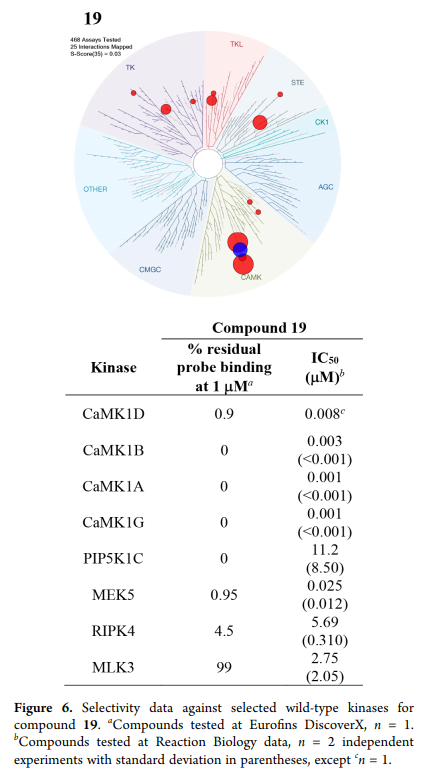 |
The negative control CS640s was tested in an in house kinase DSF Panel, showing no Tm shift on any kinase.
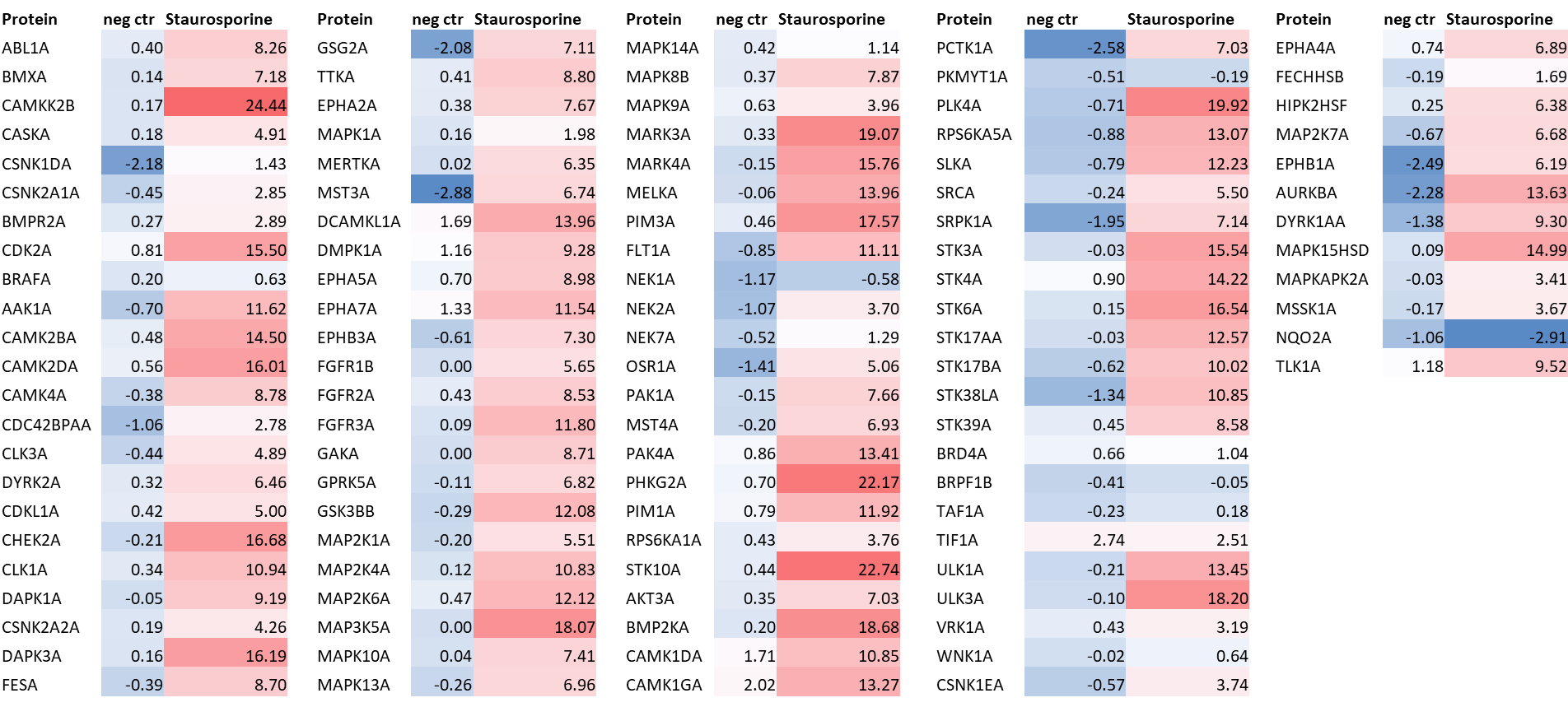
To minimize the chance of off-target effects, we recommend a concentration of no higher than 1 µM for cell-based assays. Some toxicity was found at conc. of 10 µM at some cell lines. For in vivo studies the probe was tested up to 40 mg/kg in in Diet-Induced Obesity in vivo mouse models.
In NanoBRET assay using HEK293T cells CS640 binds all Kinase from the CAMK1 subfamily:
CAMK1A IC50 = 23 nM, CAMK1B IC50 = 8.2 nM, CAMK1D IC50 = 29 nM, CAMK1G IC50 = 55 nM
In the Cerep-Panlabs Saftey Screens, CS640 showed no critical off target effects
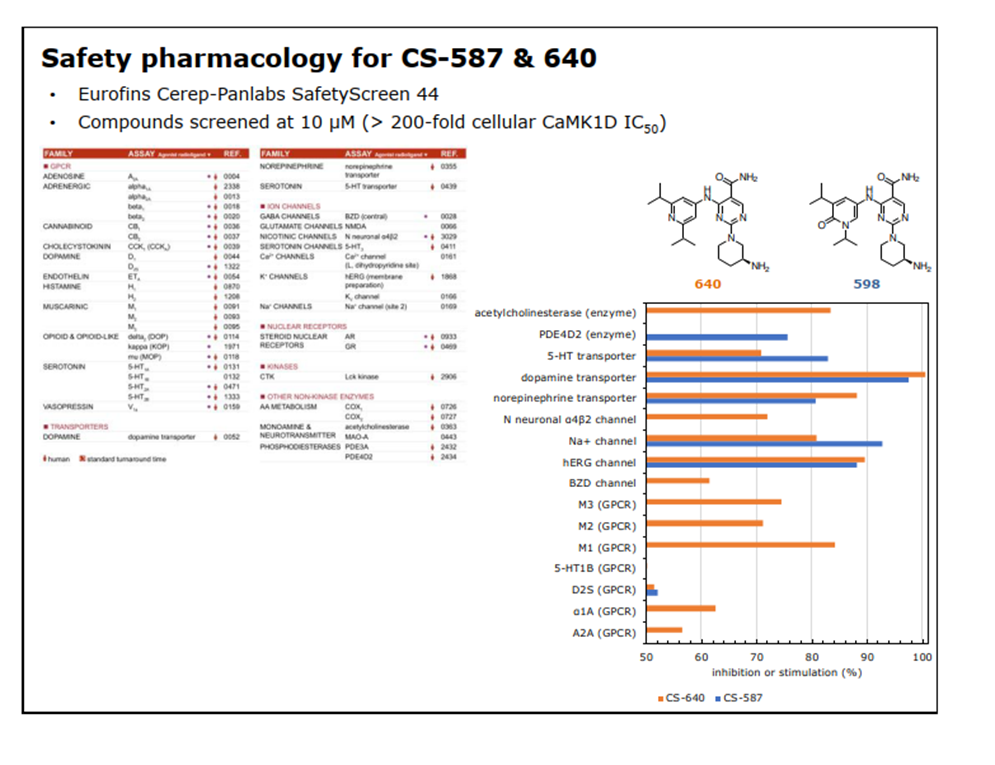
Discovery of Highly Selective Inhibitors of Calmodulin-Dependent Kinases That Restore Insulin Sensitivity in the Diet-Induced Obesity in Vivo Mouse Model
J. Med. Chem. 2020, 63, 13, 6784–6801 / https://doi.org/10.1021/acs.jmedchem.9b01803
In vivo pharmacokinetic profile of 19 in male CD-1 mice (25−40 g) and male Crl:CD Sprague−Dawley rats (250−400 g) dosed in 10% DMSO/90% hydroxypropyl-β-cyclodextrin (20% w/v), n = 3 per group. Free cell IC50 calculated by dividing measured cellular IC50 by free fraction in mouse plasma.

Binding mode of CS640 in complex with CAMK1D (PDB 6T28). The inhibitor binds to the ATP pocket as a Typ1 inhibitor.
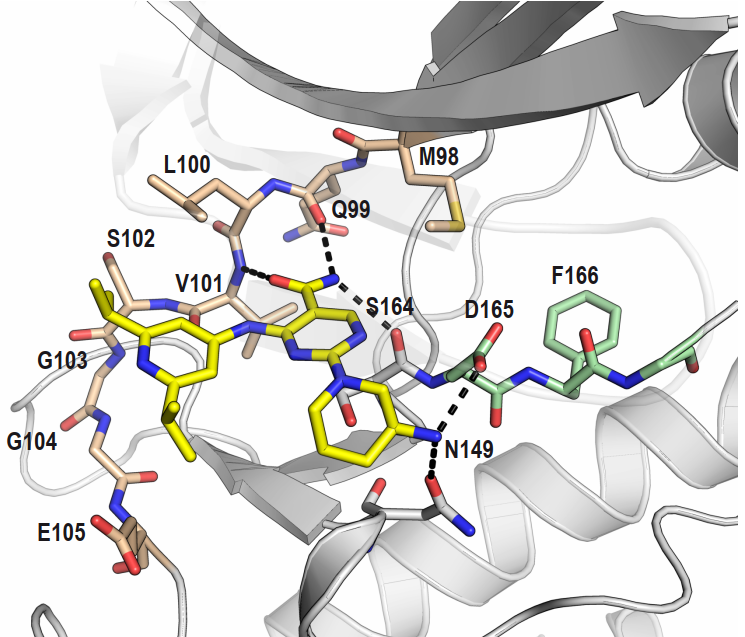 |